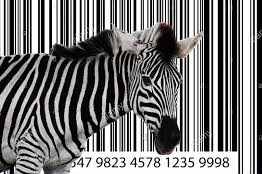Everything You Need To Know To Get Your Product Into Retail
Getting a product into retail stores is a major step for small businesses, especially if they want to grow to be large ones. Here’s everything you need to know to get your product into retail stores.
How to Get Your Product Into Retail Store
Start Online
The first step in getting your product into retail stores is to start online. You’ll need to create a website and online store for your business. This will enable you to showcase your product and allow customers to purchase it directly from you.
With a website and online store, you can focus on building an audience for your product. Use social media marketing, email campaigns, and other digital advertising methods. Additionally, having an online presence can help you build relationships with retailers who may be interested in carrying your products. With these strategies, you can reach potential customers who may then visit and ask retail stores to carry your product.
Know Your Market
Knowing who your target market is and where they shop is critical to a successful journey into retail. First, define the profile of your target customer. Does your product appeal to a feminine or masculine audience, or is it attractive to buyers regardless of their gender identification? Is your product designed to meet a specific need for people who like to cook, those who love the outdoors, or fashionistas? Drawing up a persona of your target customers will help you generate a list of stores that seem to appeal to the same demographic.
Make a list of retailers that align with your business’s mission and values and can offer appropriate stock placement to attract buyers to your products. Use publicly available analytics to confirm your products match the store’s target shopper profile. Doing thorough research will help boost your chances of success when asking stores to sell your products.
Optimize Your Brand Identity
If you’ve succeeded in establishing consistent sales online, your product has already developed a recognizable brand. However, capturing interest online is different than catching the eye of a brick-and-mortar retail customer.
How your product looks is just part of the equation. How it looks on a shelf next to similar products and the heft of the package in the hand can convince a customer to buy your product. The style and readability of the fonts of your logo and packing can also make a difference in retail success, as can color. Make sure your best online sellers will translate to the physical retail shelf without diluting your brand but instead supporting and solidifying each product’s unique character.
Make a List of Stores To Approach
Consider store size, location, and target demographics when determining which stores to approach. Look online for reviews and check out in-store experiences from past customers. Having realistic expectations based on your research can help make the process smoother and more successful once you start engaging with store owners.
Create a Compelling Pitch
A professional and convincing pitch provides stores with a concise yet comprehensive overview of your product’s features and benefits. It also explains why the product is a great fit for the store’s customers.
Present Your Pitch in Person
Reach out to your targeted store’s buyer or manager to set up a meeting so you can present your pitch in person. Design your pitch so the store manager can visualize how the product can fit into their space, appeal to their target customers, drive sales, and complement their existing inventory. Be sure to provide samples and leave marketing materials to keep your products on the manager’s mind.
Be prepared to encounter resistance. While retailers appreciate the value of a new product, they also recognize the risk. Bring numbers from your local online success to demonstrate that investing in your product will be a win for the store and that your product can attract more foot traffic.
When customers come looking for your product, it’s likely they’ll remember other items they need or see additional products they want to purchase in the store. List ways your product will complement other products already in the store and encourage the purchase of additional products.
Follow Up and Be Persistent
Once you’ve had a meeting with a retail store and discussed an opportunity to carry your products, it’s important to follow up. Don’t be discouraged if the first answer is no. Persist in targeting the same store and keep them updated on product developments and updates, including new flavors, colors, or features.
You may find that their original answer changes after they learn more about your business and the potential benefits of carrying your product. Be professional yet friendly when reaching out. Providing solutions and adding value plays a major role in securing commitments from retail stores to carry your products.
Register Your Products With GS1 and Get Barcodes
Make sure to register your product with GS1 (the global standards organization that registers international products) and equip it with a unique barcode. This is an important step in getting retail stores to buy and display your product.
GS1 assigns a unique global trade item number (GTIN) for every product registered with the organization. This ensures that buyers won’t confuse similar products from different brands or manufacturers. They also won’t confuse different models of a single brand’s products that have different features, such as color, attachments, sizes, or capabilities.
The UPC (universal product code) in readable barcode form is more than just a tool for convenience. It’s required for retailers, as it allows stores to track inventory and transactions accurately, ensuring they’re counting items according to the correct manufacturer, model, color, and size of every product.
Buy UPC codes that work online and at brick-and-mortar retailers. With a GS1-registered barcode, you are guaranteed to get properly formatted and legitimate codes that are recognized internationally by most scanners.
With everything you need to know to get your product into retail stores—including research, planning, a great pitch, and persistence—you’ll be on your way to success. Start by building an audience for your product online, and take your success into the retail shops you’re targeting to show the managers how your product can build their business.





